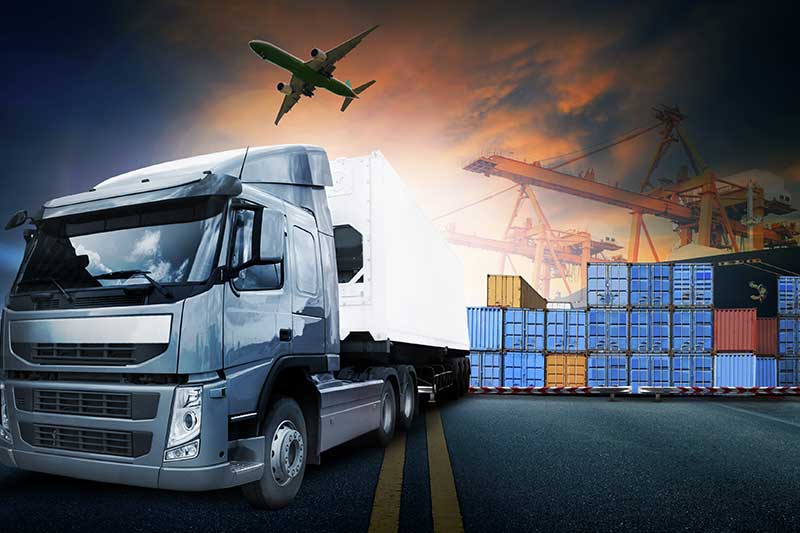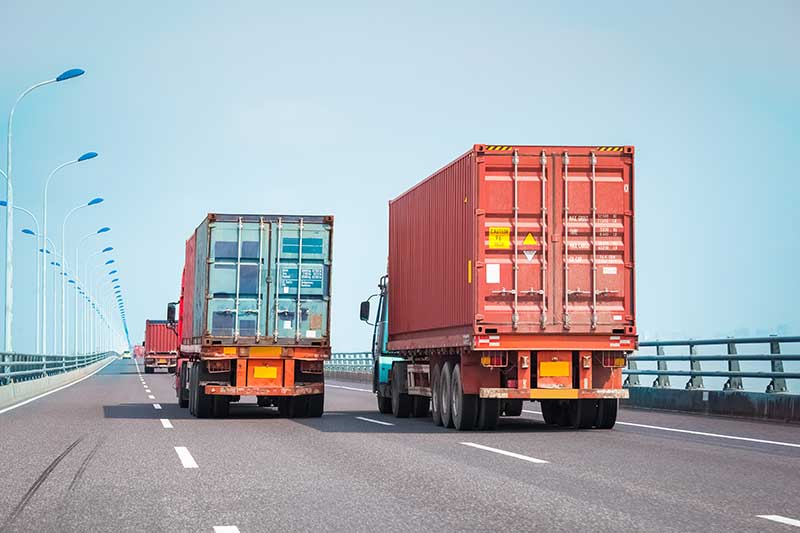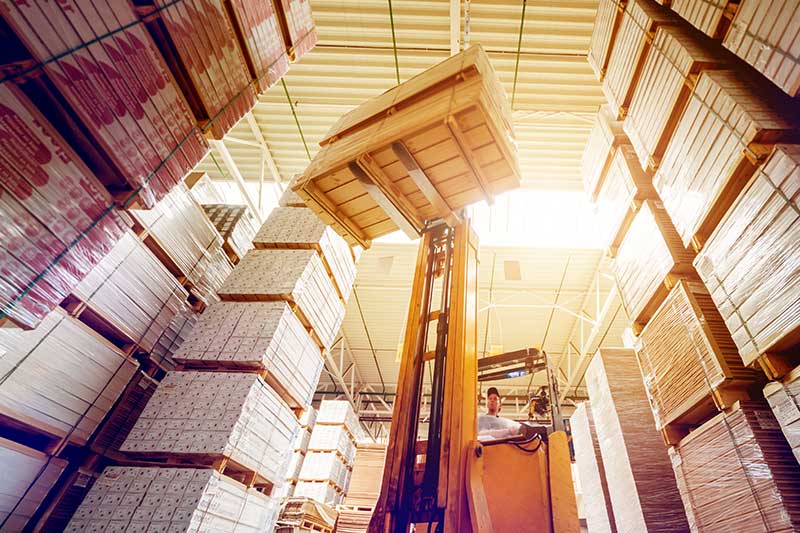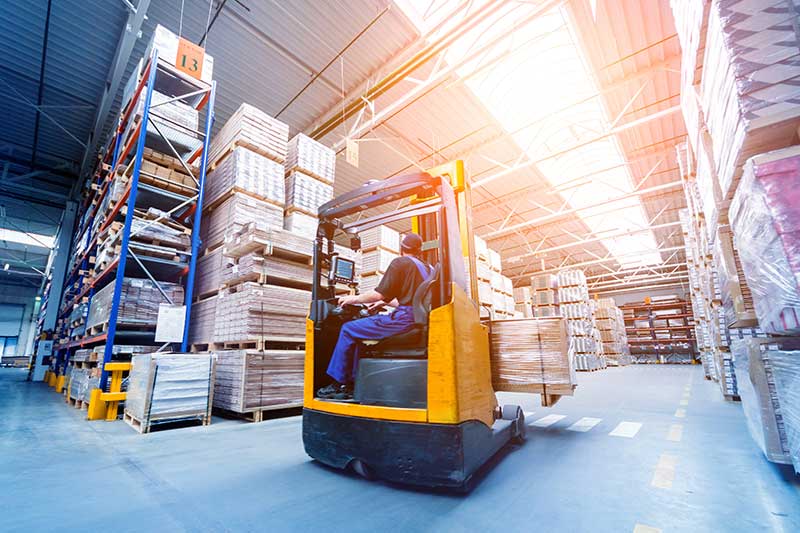Understanding The Differences Between Local And International Freight Forwarding
Freight forwarding, otherwise known as logistics, is the implementation of actions that enable smooth distribution of goods from one place to another. The complex operation is consists of incorporating management and organization of the steps that must be followed in transferring the goods from the point of origin and its consumption as they reach the customers. Almost all kinds of industries that involve physical products are relying on logistics not only for material handling. The logistics company may also take care of the packing, inventory, warehousing, and transporting of the products.
Domestic and International Freight Forwarding
Domestic freight forwarding is simply the distribution of products within a country. Both shipper and receiver (and the goods) are within the country boundaries. As for international freight forwarding, the products reach far and wide, beyond the boundaries of the country of origin. Local and international freight forwarding are different mainly because of the geographic scope of operation. Here is a comparison of the different aspects that concern both domestic and international logistics.
Management
Most domestic freight forwarding services require only one manager to oversee the operations. The scope of action or flow of goods are planned and executed in a very basic manner. The movement of products is easily tracked since there are only two points of operations: the shipper and the recipient.
With international freight forwarding, more people and teams are involved in the operations. The corporate logistics manager has several counterparts on all countries where the company operates. It is required to have a detailed plan on the execution of actions since there are a lot of steps involved in the distribution processes.
Transportation
For domestic freight forwarding, a variety of transportation options may be used to move the goods and road transport is usually the most preferred option. In international freight forwarding, there are limitations on the mode of transportation, depending on the point of destination. Freight forwarding companies offer a range of multi-modal global cargo transport solutions. Some may be transported by rail only, by flight, by sea, or a combination of these for a single transaction. Some drawbacks, such as air transport being expensive and sea freight being the cheapest but also the most challenging option, must also be considered.
Costs
Both domestic and international freight forwarding has to consider the costs involved for transportation, manpower, technology, and storage facilities. International freight forwarding has some additional costs to take note since there is a need to pay for tariffs, taxes, currency exchange and fees fluctuations.
Supply Chain Associations
Building trustworthy business relationships is the cornerstone of freight forwarding. It is easier to gain the trust of domestic partners compared to international partners. Different country regulations, economic roadblocks, and geographic locations are the different challenges that must be overcome to succeed in this type of industry.
Freight forwarding is a growing industry. If you are going to include logistics to your business, It is essential that you understand the factors that make up the chain of command for both domestic and international freight forwarding.
Understanding Temperature Controlled Freight Shipping
In the most basic terms, temperature controlled freight shipping means moving goods that are climate sensitive. For instance, you only want your chocolate melting in your mouth, your flowers blooming, and your produce fresh and tasty. From dock to dock, those items must be maintained in a stable temperature, and that requires special storage and handling.
Fortunately, with reefers (refrigerated trailers) and other refrigerated shipping methods in place, unaffected products are delivered every day. Let’s take a close look at temperature controlled freight shipping.
Freight Value and Temperature Sensitivity Prioritization
You must first identify critical shipping needs to have the most cost-effective and efficient logistics in place. As far as security requirements, speed, and temperature stability are concerned, not all items are equal. Figure out what’s perishable and what isn’t. Overall cost is most likely to be impacted with items over which temperature has an influence. Standard shipping options may well be appropriate for items that are less sensitive. For high-value items, a tailored logistics approach is advisable.
Limitations on Refrigerated Freight Packaging
There is less capacity in refrigerated freight trucks than in others. Truck space is reduced because of the insulated walls. This should have a direct reflection on your crating and packaging. Additionally, payload capacity is affected by the weight of the equipment used to control temperatures.
With the carrier of your products, be sure to address all temperature guidelines. Proper parameters are more likely to be used if you lay out all the specifics ahead of time.
Temperature controlled docks are also used to help secure items that are highly temperature sensitive. Additionally, to maintain the cold chain properly and reduce the alteration of inside trailer temperatures, drivers are advised to keep the doors closed until it’s absolutely necessary to open them.
The Best Packaging for the Job
Crating and packing, when done correctly, can protect your perishable items from humidity or extreme temperatures, even if they are exposed to harsh environments. To reduce heat transfer through the container walls of packaging, insulation is recommended. There are numerous types of insulation used in the shipping industry.
Dry ice and gel coolants are used for cool items that are considered temperature sensitive. Because of the leak potential and heaviness of wet ice, gel coolants are preferred over wet ice. If dry ice is being used for temperature control, some things must be provided. These are as follows:
- IATA compliant outer packaging labeling and markings
- Classification
- Correct identification
To absorb any liquids, it’s advisable to have paper towels, cellulose wadding, or pads under the shipment when shipping frozen items.
A Freight Service Provider That Is Trustworthy
When you join forces with a logistics partner such as a freight service provider, the following benefits can apply:
- LTL services that are temperature controlled covering much of North America and the United States
- Visibility to trace and track shipments
- A single point of contact for your company’s LTL and temperature controlled truckload shipments
- A wide array of business relationships
- Thorough beverage and food knowledge
When handling things like shipments that are temperature controlled, there are a lot of requirements to consider. To make sure your shipment is on the right track, you have to think about preparation, support, tools, etc. The specialists at STC Logistics can help. Contact us today to see how we can be of assistance where other logistics matters are concerned as well.
Tips To Enhance E-Commerce Fulfillment Efficiency
As entities such as Amazon and Walmart increase in popularity, e-commerce merchants must find a way to compete. By improving the customer experience, reducing expenses, and improving operations, as well as increasing e-commerce fulfillment efficiency, merchants strive to not only keep up – but exceed the success of the “E-Commerce Big Dogs”.
In an effort to assist e-commerce merchants in their endeavor, we have put together a number of ways to improve performance and make fulfillment operations more efficient.
Is Outsourcing an Option?
By outsourcing e-commerce fulfillment to a 3PL (third-party logistics provider), numerous small to midsized companies have found it to be a competitively priced, high service option to the following:
- Adding fulfillment centers
- Internal fulfillment
What this accomplishes is a more cost-effective way of achieving “closer to customers”.
New System Implementation
Are you sure that you have the right platform for growth through your current warehouse software? Perhaps tools of a stronger nature are needed including the following:
- Slotting and multiple-level kitting
- Improved management of inventory and orders
- Interfaces to automation
- ASNs (advanced shipping notices)
- Labor productivity and management analysis
Multi-DC Strategy Consideration
A multi-DC strategy should be investigated to get orders to customers at reduced shipping costs and at a faster rate. By placing inventory closer to customers, the shipping costs are reduced. Through better customer satisfaction, sales are improved. A competitively priced, high-service option to expanding your own assets or internal fulfillment is outsourcing to a 3PL.
Study Your Packaging Supply Costs
A study should be conducted by your box suppliers focusing on reducing dunnage and number of cartons. To save space, can they offer just-in-time delivery and storage?
Sensible Application of Automation
A number of factors will come into play here including unit volumes and order volumes. With an evaluation by a consultant looking at how best to accomplish and implement automation strategy and your operation in general, it will be easier to figure out what type of synergies can be achieved.
Improve Managers’ Bench Strength
Everyone’s productivity is affected by managements’ effectiveness. An evaluation of each manager is needed to find out not only how they can improve, but how their overall e-commerce fulfillment staff can achieve higher quality and productivity. A computer course or industry leadership training may be called for here.
Employee Turnover Reduction
In terms of losing experienced people and expense, excessive employee turnover can affect your bottom line. Figure out why people are leaving, if they are. Are you giving your employees incentives with opportunities to advance and assisting them with career paths?
Effective Slotting and Picking
Do you have any idea how much time is spent by a picker when traveling from one FC location to the next? As much as 60 to 70% of their time! You can lower your cost per unit picked with effective slotting to reduce travel. Another tactic is, based on product cube and sales velocity, right-sizing pick lots.
Other steps that e-commerce merchants can take to make their e-commerce fulfillment efficiency greater are as follows:
- Increase productivity
- Reduce freight costs
- Compare service level metrics
- Increase cost per order comprehension
STC Logistics can help with not only the process of improvement but with helping to keep it consistent, once it’s been initiated. If you’re not sure where to turn, but know that improvement is needed, consult one of our experts today. We can help with all of the above, and more.
Understanding The Strategic Advantages Of Intermodal Transportation
Today, the use of intermodal transportation by shippers is on the rise. Why is that? There are a number of reasons for using intermodal shipping, including the following:
- It is more energy efficient to use rail transportation.
- Moving freight costs less when “going green” in intermodal shipping.
- A better value proposition than highways is provided in many rail corridors.
What Shippers Want
Truck capacity is challenging, to say the least. Some of the reasons today involve the following:
- Hours of service on the road are being restricted by newly implemented government policies
- Increased fuel prices
- Driver shortage
If there is a way for shippers to improve service and cut costs at the same time, they are all for it. The intermodal products of today could be the solution to the shippers’ problems.
Intermodal Implementation
So how can shippers improve the strategies of their logistics through the implementation of intermodal? How do they go about it?
First and foremost, the lanes must be analyzed. Intermodal cost savings will have more opportunity the longer the haul. Determine which areas of the country loads are going out of and coming into.
Within the above stated geographical zones, define and view the rates – i.e., movement miles, build miles, loaded miles, revenue miles, total miles, empty miles – that are relative to the rail ramp pair locations. Exactly where intermodal fits into the needs of the shippers can be determined with this information.
Intermodal Transportation Business Benefits
Certain questions arise when logistics strategies are examined and plotted. Questions like the following:
- What is the value proposition?
- How can this benefit my business?
To help answer those questions, here are intermodal shipping’s most significant benefits (though there are more):
- Safety, capacity, and reliability advantages – More access is available by shippers to standardized transit schedules and equipment. As freight is moved to intermodal, companies realize the opportunity to provide additional savings by streamlining their reverse logistics.
- Environmentally friendly – By going intermodal, the carbon footprint produced by shippers can be significantly reduced. As an example, 19.8 pounds of carbon dioxide per 110 miles is produced by trucks; whereas only 5.4 pounds is emitted by trains. So, using trains for at least part of the trip will benefit the atmosphere and the world.
- Lower costs – Aspects that shippers can take advantage of include the following: more predictable pricing, lower rates, and the flexibility of unloading and loading goods in a dropped trailer environment. Handling costs can be reduced by the latter.
Turn to STC Logistics For Help with Intermodal Transportation
Would you like to find out what intermodal transportation could do for you or your company? The experts at STC Logistics can introduce you to a number of plans for handling your global or domestic transportation needs including transborder transportation. We also can advise you in areas such as distributions and rollouts, packing and creating, installations, technology, fulfillment and warehousing, and more.
Our mission is to deliver flexible, superior solutions for the logistics requirements of our clients. We are committed to providing the most efficient and effective solutions and logistics and technology – without limiting destination, size, or weight.
Top Tips To Enhance Warehouse And Inventory Management Efficiency
For a manufacturing company to succeed and improve its production capabilities, it needs to first manage its warehouse and inventory efficiently. In order to improve warehouse operations and manage inventory more efficiently, consider the following tips:
Implement an Automated Data System
The use of RFID (radio-frequency identification) systems, barcodes, or any other inventory tracking technology to manage goods in a warehouse can help reduce the risk of human error. When workers are tasked with collecting data manually, this can be risky and affect warehouse efficiencies. Failure to correctly note down the correct number or letter can be the difference in losing a lot of money.
By implementing automated data systems, business owners will be able to store up-to-date data with greater ease. Workers are also able to access the information instantly at any time. In addition, adopting an ERP system with a strong warehouse management system (WMS) module can help improve overall efficiency by suggesting the best methods and routes for picking or storing goods.
Organize Workstations
A well-arranged and organized warehouse makes it easy for workers to locate products, equipment, and tools. This helps to reduce human error and improve workplace safety as well. To organize a workstation, you need to adopt the 5s: sorting, setting in order, shinning, standardizing, and sustaining. This system helps to keep clutter at bay.
Lean Inventory
Adopting a lean inventory in manufacturing is important and the same concept applies to a warehouse as well. The basic rule to maintain a lean inventory by storing only what you need and nothing more. In addition, you can work toward reducing or possibly eliminating safety stocks and trying to get suppliers to deliver smaller quantities frequently.
Maximize Available Space
Instead of worrying on how to expand the footprint of your warehouse, think more on how to better maximize any available vertical space. Rather than incurring expansion costs, it is wiser to add tall storage units and invest in the right storage kits to be able to store more items in the same square footage. In addition, consider the type and variety of shelves you use. Different materials need different types of shelving. For example, if you store small things on pallet racks, you may end up wasting space and items can easily get misplaced. Consider using standardized bins to keep shelves orderly and neat.
Optimize Labor Efficiency
You can reduce travel time in your warehouse by storing high-volume items together near the front of the facility. Also, you can analyze your material usage and keep the items that are frequently used or sold near one another. This system not only eliminates picking delays, but also fastens operations resulting in more productivity.
Plan Ahead With Picking Procedures
Plan in advance with an efficient freight company on picking hours. This prevents last minute work and helps to eliminate the inconvenience of being short-handed during peak periods. Recognizing picking style patterns helps floor managers to direct pickers to the areas that require the most work.
Once you enhance your warehouse and inventory management efficiency, you are expected to achieve:
- Reduced error rates
- Increased productivity
- Improved order fulfillment
- Increased operational efficiency
- Minimized inventory holding costs
Tech Trends That Are Changing The Freight Shipping Industry
The latest advancements in technology and the logistics industry have not always had a close-knit relationship. Their reluctance or inability to capitalize on technology has cost the logistics industry in several ways including the following:
- slowed freight shipping times
- negatively affected efficiency
- trucking congestion
- problems in ports, and more
But to maximize security and efficiency and streamline processes involved in logistics, the industry will have to perk up, take notice, and get in the game. If they’re going to level the playing field between themselves and other businesses, there are a handful of new trends that should catch the eye and interest of every logistics CO and be a part of their future plans – and soon!
The Adoption of Blockchain
Blockchain is a technology that is often misunderstood but much-hyped. It’s already making an impact for those who have adopted it in the world of logistics. One logistics company, for instance, came up with the solution of blockchain to secure and streamline information exchanges between more than 90 organizations and companies involved in the activity of global shipping. Blockchain driven smart contracts are what the program is built upon. The program involves terminal and port operators, customs brokers, carriers, customs officials, and some freight forwarders.
Customer-Centricity
While catering to individuals, businesses, and companies with the need for shipping, the freight forwarding sector has traditionally been focused on process. But as more shipping services are needed by smaller businesses, and globalization takes hold, the need for freight forwarders and shipping services is forcing them to take an approach other than the conventional one. They now find themselves putting, at the forefront of modernization efforts, their customer’s perception.
As an example, customer service can be greatly enhanced through the use of digital solutions developing media marketing strategies, strategic content marketing, user-friendly websites, and the offer of instant shipping quotes.
Finding Solutions Through the “Internet of Things”
First things first, what is the Internet of Things? Here’s the easy answer: sometimes abbreviated as IoT, it includes all devices that are web-enabled and gather, forward, and act according to data collected from environments around them. To do this, they use communication hardware, processors, and embedded sensors.
If you control your household lights, locks, heat, etc. through your phone – you are using the Internet of Things.
This can be exceedingly useful where shipping data is concerned to track and analyze all things related to products and transport.
Real-Time Data – Use It
To ensure that your resources are used more efficiently, and to improve coordination and scheduling, real-time information should be utilized. Through data-sharing tools, this is currently being used in ports to monitor arrival and departure times, and more. The flow of cargo has been improved, thereby reducing port congestion. By planning and deploying equipment and labor, efficiency has been increased and the flow of cargo bettered.
Cybersecurity Must Be a Prime Focus
If you listen to the news or surf the net at all, you’re probably well aware of the problems some companies are facing with hackers and identity theft. Cybersecurity is a hot button today, and for good reason. A company’s infrastructure can be completely crippled by a cyber attack. Ports around the globe would be affected as well. Freight forwarders must adopt faster, more responsive digital solutions rather than sticking with the traditional processes they’ve always used. As companies implement brand-new systems, they must integrate cyber-security.
Confused yet? Contact us at STC Logistics and let us explain all of these trends in a manner that is more comprehendible and personally applicable to your particular situation.
When Should You Opt For Intermodal Transportation Solutions?
Many businesses consider shipping as a crucial part of their operations but not all are willing to spend as much in terms of shipping costs. This can be the reason behind why a lot of retailers and wholesalers shy away from the thought of using intermodal transportation solutions. Add to that, they think that the entire idea is complex, with the use of different modes of shipment in the process. The question is: when should you opt for this solution?
Plenty of Items Need to be Shipped within a Short Period of Time
If you have 10 or more shipments to make from one state to another, then you find out that the usual truckload rate covers only up to five of these shipments. What do you do? You cannot just sit down doing nothing about it. Here is where intermodal shipping comes in. The good thing about this is that you can get a quote and be surprised that the amount you will spend is less than what you expect. Add to that, the quote covers for all the shipments that you need to make in the next two days or so. All shipments will be out, by then, plus you will surely increase your margin.
You Want to Abide by Environment Regulation Codes
With everyone trying to make his or her fair share to save the environment, you will also want to save the planet by reducing the truckload freight that you are moving. Using intermodal transportation will be an easy solution to that. Trains can easily move a ton of shipment at a gallon of gas for 500 miles. With this option, you can optimize the route for your shipment, by decreasing the miles with which your freight will be on the road.
Caught between Full Truckload Shipping versus Less than Truckload (LTL) Shipping
A full truckload shipping is definitely cheaper than LTL shipping. There are instances though when you feel like a made-to-order product must be shipped using LTL. You may have regrets doing so. It is best to use intermodal shipping because it charges a minimal fee, which means you will pay a small amount in terms of daily charge until you are ready to ship everything that is inside the container. You will save more in the long run.
You Want to Avoid Congestion of Shipments on Usual Roads
Some people think that intermodal shipping can double transit times when compared to over-the-road facilities. This makes you back out of the opportunity to save more on this option. Remember that road transportation can also delay shipments given road congestion. Moving your freight to intermodal shipping will help you avoid this. There is also an online tracking system so that you can easily locate where your shipment is at the moment.
With all scenarios presented above, you will surely be convinced to give intermodal shipping a try. Of course, you would want to consider hiring a team to help you put these goals into reality. An experienced logistics company like STC Logistics can help you with that. We are known for transporting shipments locally and internationally, at extremely competitive rates.
How To Enhance Item Stock Management In Your Warehouse
Running a retail or wholesale business entails the need to deal with stock on a day-to-day basis. When there are thousands of merchandises on hand, it is crucial to know how to manage all of them in an organized manner. How can you be assured that you have an efficient stock management system in your warehouse? Following the tips in here will do you a lot of help.
Manage Stocks Accordingly
Old stocks need to go first before newer items. This is especially so if you are selling goods that have expiry dates. If you want to make sure that you are handling all these items efficiently, you need to separate old merchandise from new ones. Using a warehouse management software will help if you have thousands of items in your warehouse. That way, you will be able to manage your stocks at a lesser amount of time.
Consider fast and slow-moving items in your inventory as well. You have to consider these when separating items accordingly. Fast-selling items will surely go first thus they should be stocked where they can be accessed easily. For your slow-moving items, on the other hand, it will be good to develop strategies on how to sell them fast too. This is aside from stocking them in an area where they can be kept for a longer time than usual.
Make Your Records Accurate
Your records are very important when managing a warehouse. You need to record what goes in and out of it, by updating your record books regularly. Make sure that all items are well accounted for at the time they get in and go out of your warehouse. You would never want the idea of losing profit just because you failed to record the goods that have already been out of your facility.
Make an Inventory Forecast
This can be one of the most difficult steps when handling your inventory, especially if your products fall into different categories. Forecasting involves determining the price of the item, thus making forecasting even more complicated. Using an inventory system is the solution to making forecasting a whole lot easier. There is a type of software that can help automate forecasts for easier inventory taking.
Assign a Barcode to Your Products
Barcodes do a lot of help in recording the flow of your inventory, as well as in speeding up the process of doing your inventory taking regularly. Barcode systems these days already include codes where they are easier to spot when you have bought an item. You just need a barcode scanner to access the printed barcode. From there, the product information will already be displayed on the computer screen.
Warehouse management can be a tough job, without the help of companies that are already experts on handling stock. Working with a logistics company can help save you from these tiresome processes. At STC Logistics, we have warehouse fulfillment measures that will work when it comes to managing stock piece by piece without much of a hassle. We have inventory management systems that are proven to work for any type of business.
How To Choose The Correct Warehouse Management System
Because 3PL (the abbreviation of third-party logistics) warehousing is constantly evolving, one’s operation may experience several changes over the years. That’s why growing 3PLs are recommended to employ a warehouse management system (WMS) that adapts and changes with their businesses. Because there is a wide range of warehouses operating in the logistics vertical today, there is an abundance of software to choose from. Before starting your search for the perfect WMS, it is important to first identify several key traits about your warehouse.
Understand Your Shipments
Does your business specialize in assembling and kitting; carton in/carton out; or pallet in/pallet out (cross-docking)? It is recommended that business owners choose a WMS technology that can automate existing workflows and enable hands-free shipping, packing, and picking. With the rise of e-commerce, achieving 100 percent order accuracy will be invaluable to your customers as you scale together.
Identify Products that Require Storage
Another step you can take is to identify all the types of products that are currently stored in the warehouse, as well as items that may be stored in the future. By gaining a clear picture on which type of warehouse you want to operate, the more specific you can be in the software selection process. For example, if you store products with expiry dates (e.g., beauty and makeup products), consider installing a WMS that facilitates a First-In, First-Out (FIFO) distribution model. Alternatively, one may utilize a WMS that tracks catch weights if the business focuses on grocery distribution.
Notice How Customers Place Orders
Today, having a WMS that accommodates how one’s customers place their orders is more important than ever. Below is a quick look at some of the most common order placement methods:
- Retail/Electronic Data Interchange (EDI): Large retail customers often prefer to establish EDI connections when ordering. Choose a reliable WMS that can manage and facilitate these connections.
- API/Shopping Carts: If your warehouse serves omnichannel or e-commerce customers, the chosen WMS should come with the ability to add shopping cart integrations, e.g., with ShipStation, Amazon, WooCommerce, and Shopify.
- Spreadsheets: Some customers may place their orders by sending CSV or other Excel files. Your selected WMS should have an easy to use import function.
- Manual: While allowing customers to place orders via phone call or email may seem harmless at first, receiving this information requires manual work. In addition, it may increase the risk of human error that affect one’s bottom-line. A smarter solution is to offer customers a dedicated portal where they can place orders directly into your system and/or check the latest inventory status.
Consider the Number of Customers You Serve
It is now common for warehouses to serve multiple customers that sell through different channels. Business owners need to start considering how to better receive each customer’s orders, store and manage their inventories, and manage billing matters so that each customer’s data is kept separate. With that said, you may want a WMS that brings together multiple technologies: billing, mobile device shipping and picking workflows, automated receiving processes, and shopping carts.
Top Tips to Ship Sensitive Life Sciences Cargo
The companies responsible for life science products frequently have to have their goods transported throughout the world. This poses considerable shipping challenges. Often, stringent regulations apply to these types of shipments. The well-being and health of the population in general can be directly impacted by these products. Sometimes, mishandling products like this mean the difference between life and death. So, sensitive life sciences cargo needs precise, special attention when being shipped.
What Is Life Science?
The term “life sciences” is an all-encompassing term referring to companies involved in the following fields:
- Institutions
- Organizations
- Biomedical devices
- Environmental
- Food processing
- Cosmeceuticals
- Nutraceuticals
- Life system technologies
- Biomedical technologies
- Pharmaceuticals
- Biotechnology and more
These life science companies dedicate the bulk of their energy to differing stages of commercialization, technology transfer, development, and research.
Life Science Products
Now that you have an idea of what life sciences refers to, what are some of the products that could be involved?
Far too many to list here, a very small example of products that fall under the life sciences classification are as follows:
- Chemicals
- Cell cultureware
- Trays, containers, beakers, bottles, and other liquid handling products
- Razor blades, surgical blades
- X-ray accessories and films
- DNA kits
- Gloves, tape, stickers, labels, etc. for biotech and other scientific research
- Petri dishes and tissue culture products
- Isolation kits and more
Why Shipping Life Science Products Is Challenging
In addition to the initially mentioned challenges, the shipping of life science products can offer other issues that need to be dealt with. Frequently, products shipped under this classification can be regarded as hazardous and are temperature sensitive, time sensitive, and delicate.
If, for example, incorrect handling or improper shipping of pharmaceutical products takes place, the pharmaceuticals themselves may become harmful or ineffective. Clearly, this will not do.
So, shipments of life science goods must result in delivered goods that are in perfect condition when they arrive. Plus, they must arrive on time in order for the shippers and life science companies to be happy and make money.
Life Science Shipping – Six Steps
The following steps will help to ensure that life science shipments are taken care of on time and safely:
- A compliance program must be established.
- Manual paperwork should be eliminated.
- The correct packaging must be chosen.
- Instructions must be clear and succinct.
- The appropriate transportation partnering must be present (a reliable, reputable 3PL or logistics company will go a long way here).
- Goods must be tracked.
More Challenges on the Horizon
If you thought that there were already a lot of challenges involved in the life sciences shipping industry, hold on! The future of life sciences transport/shipping will involve the following:
- Coming changes to regulatory constraints and requirements
- Direct to-patient deliveries
- Patient-centric approaches
- Biologics and other new treatments
- Increasing importance of emerging markets
Are you, as a shipper, ready for the future of life science products?
If you answered “no”, “maybe”, or “I don’t know” to that question, or if you are having difficulties with warehousing, general shipping, or any other logistics related topics, STC Logistics can come to your rescue. We deal with all of the above and more on a daily basis and have been doing so since 1992. Contact us today for more information.



















